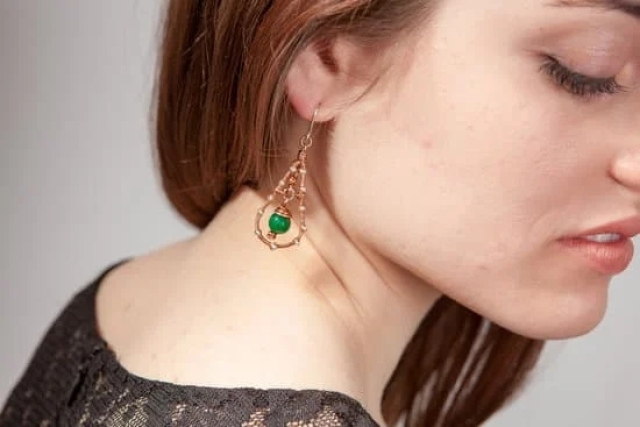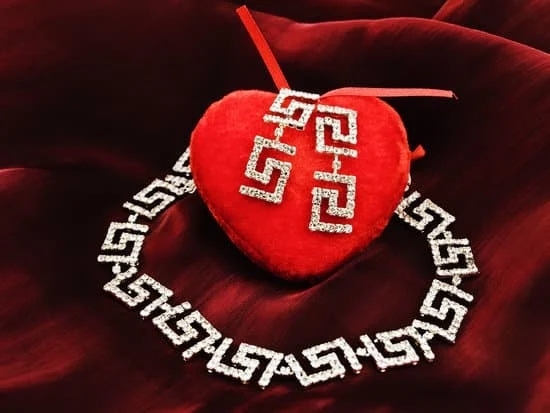Faux pearls, also known as imitations, or costume jewelry are made of materials such as glass beads, plastic or stones. Popular because of their affordable price and elegant look, faux-pearls have become a favourite for many. Although less durable than real pearls, regular care and cleaning can help lengthen the life span of jewelry pieces.
Regular Care Tips & Cleaning with Soap & Water Caring for faux pearl jewellery does not require special techniques; simple habits such as taking off your faux pearls before exercising or showering and keeping it away from harsh chemicals that may harm the surface will help keep your jewelry in good condition. Regularly buffing the surface with a jewelry cloth will also restore its original shine and luster.
To clean your bead necklace, you can use a mild soap and water solution along with a small soft brush to gently remove dirt dots and dust on the surface of the beads. Rinse it under warm running water before air drying thoroughly on a soft tissue.
Polishing with Jewelry Cloths & Proper Storage Plant-derived jewelry cleaning cloths can be used to buff and polish long strand necklaces without adding any solutions to it. Connected clasp closure has to be opened before proceeding with this process. Once all polishing is done correctly, store them away in an anti-tarnish bag or box while making sure they are laid flat in order to keep the original shape of the necklace intact.
This will help prevent scratches or cracks on delicate accessories like faux pearls rings etc that may eventually lead to breakage or discoloration if left outside in humid conditions for too long. Faux pearl jewellery that is properly stored and cared for will last longer and look more beautiful for years to come.
Preparing the Cleaning Materials
Before starting to clean your faux pearl jewelry, it is essential that you prepare the materials needed for the process. With the right equipment and supplies, you will be able to make your jewelry look as good as new in no time. Here are some of the essential items you should gather first:
- Soft Bristle Toothbrush
- Liquid Soap
- Dishcloth or Clean Soft Cloth
- Container of lukewarm Water
The Steps to Follow for Cleaning Pearls
Once you have everything ready, here are the steps that must be followed in order to properly clean your faux pearl jewelry:
- Make a Mild Solution: Take a teaspoon of liquid soap and mix it with one cup of warm water. Stir it gently until it’s mixed completely.
- Dip Your Jewelry: With a dishcloth or clean soft cloth, dip and soak your jewelry into the mild solution.
- Scrub Gently: Place your jewelry onto the surface of a soft bristle toothbrush and gently scrub away any dirt or residue. Make sure not to apply too much pressure as this can cause wear and tear over time.
- Rinse Again Under Cold Water : After scrubbing all of the dirt away, rinse off your jewelry under cold water until all of the soap has been removed.
- Polish with Cloth : To dry off your faux pearls carefully pat them down with either lint-free or chamois cloth. This will help their shine come back out like new.
Removing Dirt & Debris
Faux pearl jewelry is a classic way to dress up an outfit and add a timeless style. Cleaning this type of jewelry is easy, but it does require different techniques for stubborn buildup. With proper cleaning, your pieces will look like new again.
Using Soap & Water
For light maintenance, you can use mild dish soap and lukewarm water to clean your faux pearl jewelry at home. It’s important to choose mild soap because strong detergents can damage the finish of the pearls. Dip a soft cloth into the soapy water and gently rub down each piece – paying extra attention to any areas with dirt or debris build-up – until fully clean.
Make sure to rinse off all of the soap between pieces using only lukewarm water so that the pearls don’t become dull over time. Once done, use a second dry cloth to fully dry each piece before storing in a cool, dry place away from direct sunlight.
Using Rubbing Alcohol
For grime or residue build-up on stone settings and around clasps of pearl necklaces and bracelets, rubbing alcohol will be needed for a deeper cleanse. Dab some rubbing alcohol onto a cotton swab or soft toothbrush and gently scrub affected areas until residue is gone – thus revealing renewed lustre in your faux pearls.
You may also want to add a drop of rubbing alcohol onto your necklaces periodically while they are being worn as it helps protect their shine against sweat or makeup residue.
Applying Silver Polish
If your faux pearl jewellery has metal components such as silver chains or lockets, it should be cleaned with sterling silver polishing cloths every once in awhile for optimal care (as sterling silver can easily tarnish if exposed). For deeper cleaning, some people find that adding baking soda to a tablespoon of warm water works great instead (similarly making sure to rinse off completely afterwards).
Polishing with Cleaners and/or Buffers
Faux pearl jewelry can look great for years, and a simple cleaning regimen is all that is required to keep faux pearls at their best. To preserve the luster of any pieces of jewelry, it is paramount to ensure that they are always kept clean. However, due to its delicate nature, faux pearl jewelry needs to be handled with extra care. With the following steps you can have your pieces of jewelry looking as good as new:
- Gently wiping: Using a soft cloth or an old toothbrush, gently wipe the surface of the piece if it is only lighty or moderately soiled.
- Soaking: If the clutter on your jewelry cannot be removed by wiping alone, then you may need to soak the item in soapy water using mild detergent for up to five minutes. This will enable you to remove dirt without scrubbing too hard which could risk scratching the surface.
- Polishing: Polishing can be done using protective buffing powders or liquid cleaner specifically made for cleaning faux pearl jewelry given that using traditional sterling silver polish can discolor or damage these types of materials. You can make use of other alternatives such as olive oil or even vinegar and water solution.
It is also important to never rub two dry pieces of Faux Pearl Jewelry together as friction between them could risk they scratch and deteriorate each other over time. It is better to store jewelry separately wrapped with soft cloth when not wearing them. Last but not least, do not forget to remove any pearls before swimming in chlorine water or taking hot baths, protecting them from intense amounts of heat and humidity.
Recommended Cleaning Routines
Faux pearls are an affordable option for people who want the look of genuine pearls. While they don’t require the same level of care as genuine pearls, it is important to give faux pearl jewelry some occasional maintenance. With the right cleaning techniques, you can ensure that your faux pearls will last a long time with minimum damage and fading. Here is a simple guide on how to clean your faux pearl jewelry effectively.
Soap and Water
A basic, quick cleaning of fake pearl items can be done with warm water and mild soap. Note that dish detergent is too harsh for this method as it could erode your jewelry’s finish over time. Make sure you use a mild or natural soap such as baby shampoo instead.
Place your faux pearl pieces in a bowl and mix warm water and a few drops of mild soap together in the bowl until bubbly – but not too much. Then take a soft-bristled toothbrush and gently scrub each piece of faux pearl jewelry with the mixture.
After all pieces have been cleaned, rinse them off using cool running tap water until all residue from the solution has been washed away, being careful not to let them become overly wet in order to avoid discoloration or rusting issues.
Ammonia Mixture
If you need to remove tough surface dirt or darkened areas on your faux pearl items, an ammonia mixture works best – however, use caution when handling this solution as it can be harmful if mishandled without proper ventilation (safe outside space). To create an effective ammonia mixture for deep-cleaning fake winter sky diamonds, simply combine one tablespoon of household ammonia with one cup of lukewarm water in a small container.
Then dip a cotton swab into the solution and lightly scrub any stained or tarnished spots on each piece before rinsing them off thoroughly with clean water (again, making sure there’s no run-off). Let air dry after finishing; this should only take around 20-30 minutes depending on weather conditions outside where drying takes place.
Polishing Cloth
To bring out that extra bit of shine on your faked zirconium jewelry pieces consider investing in purchasing special polishing cloths for synthetic items like pearls. Using circular motions against all surfaces big enough to fit onto them should effectively restore age old or worn costume costume fashion accessoriesback into their former glory-simply make sure that it’s used every so often in order to keep things from becoming duller than before.
A microfiber cloth works great if one isn’t available since these are nearly always lint free while being gentle enough not cause abrasions either since its fibers are quite narrow compared to other textiles used alongside garments over time.
Preventing Damage
In addition to regularly cleaning your faux pearl jewelry, it is also important to store the pieces properly in order to ensure their longevity and prevent any damage. Here are some tips:
- Avoid using a jewelry box with soft interior lining as this may cause scratches on your jewels.
- Separate each piece of pearl jewelry so they don’t rub against each other.
- If possible, wrap each piece in soft tissue paper to avoid scratching or tarnishing.
- Store your pieces in a sealed jewelry pouch or in an airtight bag
Cleaning Faux Pearl Jewellery with Commercial Cleaners
One option for cleaning your faux pearls is commercial cleaners. Many stores specialize in supplying jewelry cleaning liquids and solutions that can be used at home for silver and gold plated items such as faux pearls.
Make sure the solution you choose does not contain any type of abrasive chemicals as these can damage the outer layer of your jewels. Make sure you pour a small amount of solution onto a cotton swab and carefully dab it onto the faux pearl’s surface.
As an alternative, use one part detergent (baby shampoo) mixed with four parts warm water. Soak the faux pearl for two minutes before gently scrubbing away dirt and grime with a soft cloth. Finally, rinse off the remaining detergent/soap using clean running water and then pat dry with a lint-free cloth.
Cleaning Faux Pearls with Household Items
Faux pearls aren’t just easy to maintain – you can also find products around your house which help create an effective cleaning solution. You can use white vinegar, which is an incredibly efficient cleaner, along with dish soap, baking soda or even lemon juice depending on what materials make up your piece of jewelery.
Start by pouring a few tablespoons of white vinegar into lukewarm water and mix until sudsy; dip the item into this mixture alongside any other product you have chosen to use and let soak for about 3 minutes before removing them from the bowl separately – do not scrub while still submerged. Once removed use a toothbrush or another soft bristled brush to gently remove any dirt present on the item’s surface before rinsing off lightly.
Reconditioning Faux Pearls
1. Begin by inspecting your faux pearl jewelry for discoloration and scratches. Identify where the damage is and decide if you will need to do any reparation.
2. If there is light discoloration, try using a mild soap and warm water solution to clean the pearls. Dip a soft cloth in the soap water and gently rub it against the affected area of each pearl, if cleaning does not help maybe more drastic action is required.
3. If there are deeper scratches or cracks on the pearls, squeeze some toothpaste on a wet file cloth and rub it again each pearl’s surface gently until the scratches begin to come out. Once you have finished buffing out all of the scratches, rinse with cold water and pat dry with a soft cloth.
4 Steps To Clean Faux Pearls
- Inspect your faux pearls for discoloration or scratches
- If light discoloration, use mild soap & warm water solution
- If deeper scratches, rub toothpaste onto a wet cloth to buff out
- Rinse & pat dry with a soft cloth when finished
Signs of Damage
Faux pearl jewelry is made to look like real pearls without the cost, but require regular cleaning just as real pearl jewelry does. Without regular cleanings, the pieces can become dull and slightly damaged due to chemical residue from everyday activities, residue and dirt buildup.
It is important to check your faux pearl jewelry regularly for signs of damage due to wear and tear. Sometimes all that is needed is a minor cleaning whereas other times you may need professional help on larger stone pieces or significant repair work.
To begin inspecting your faux pearl jewelry, start by picking up each piece to ascertain its weight. Heavy earrings mean that the metal settings are filled with dirt and chemical residue which can affect coloured stones set in these items.
The next step to be taken is looking closely at the setting of the faux pearls on your necklace, bracelet and earrings – a visual examination for broken metal posts attached to natural gemstones or broken wires/thread if present should take place.
Be sure that there are no open prongs or any slight shifting of the stones within their settings as this could lead to future problems if not addressed immediately. In addition, check for any scratches that could weaken a piece’s integrity by turning it over in good lighting before returning it back with care in its original storage area where less contact with air and dust will occur.
With all of these checks done it’s time for cleaning taking into account when the such jewellery was last cleaned and how much dirt was picked up through day-to-day use.
Faux pearl jewellery usually requires minimal effort to remove dingy layers; simply using warm water mixed with mild dishwashing soap should suffice after swishing the pieces around gently in the soapy solution while wearing rubber protective gloves (in order not cause damage from human oils) then rinsing afterwards with warm water again.
Buff away excess moisture with a soft polishing cloth specially meant for gold, silver or plastic items used after taking out precious items from shallow soapy solutions being careful not to use too much pressure while drying off pieces as fine faux pearls could scratch easily during this process. With this last touch your jewellery should now be ready for wear again – sparkling as ever every single time looked upon.
Professional Cleaning
It is important to know when to seek professional assistance when caring for and cleaning faux pearl jewelry. Faux pearls are usually made of acrylic plastic or glass and are typically put together using glue and metals. If the metal is exposed or there is a risk that glue could break down, it is best to take the piece to a jeweler for cleaning. They will be able to appropriately clean the piece without damaging any of its components.
It is also important to watch out for discoloration of your faux pearl jewelry. If there are any signs of discoloration it may be necessary to take your jewelry in for professional cleaning as soon as possible. When fake pearls are exposed to certain chemicals they can cause discoloration and damage the overall look of the piece if not treated correctly by an experienced jeweler.
Discolored faux-pearls can be difficult or impossible to reverse, due to their plastic composition, so immediate action should be taken by taking them in for professional cleaning. A professional cleaner can assess what type of build-up caused the issue and determine which materials may help safely remove/ care for it without causing further damage.
Jewelers have many types of specialized cleaners, polishes, and protective agents at their disposal that ordinary people do not have access too which may be necessary depending on the nature of the job at hand. They have also seen many different forms of jewelry damage due to improper home cleaning techniques and so will likely provide better diagnoses than any online instruction article ever could.

Welcome to my jewelry blog! My name is Sarah and I am the owner of this blog.
I love making jewelry and sharing my creations with others.
So whether you’re someone who loves wearing jewelry yourself or simply enjoys learning about it, be sure to check out my blog for insightful posts on everything related to this exciting topic!





